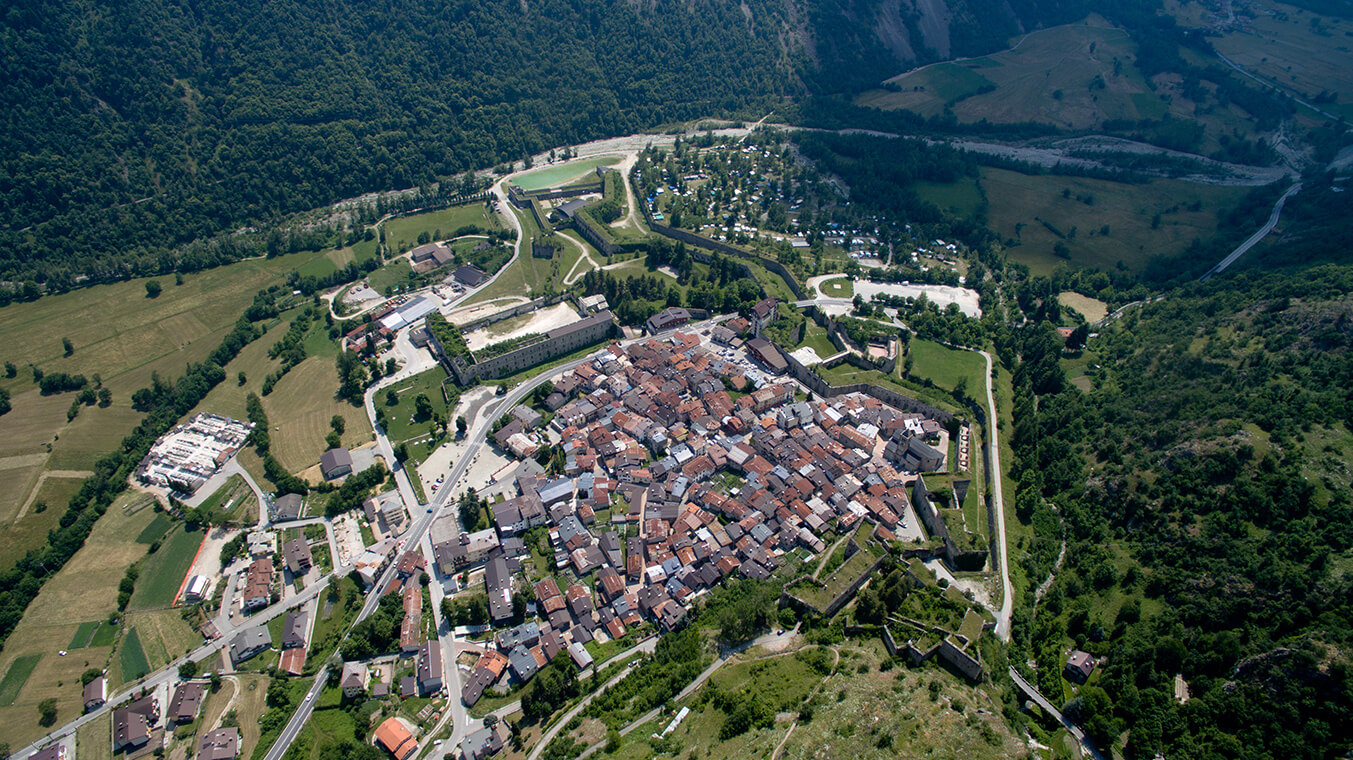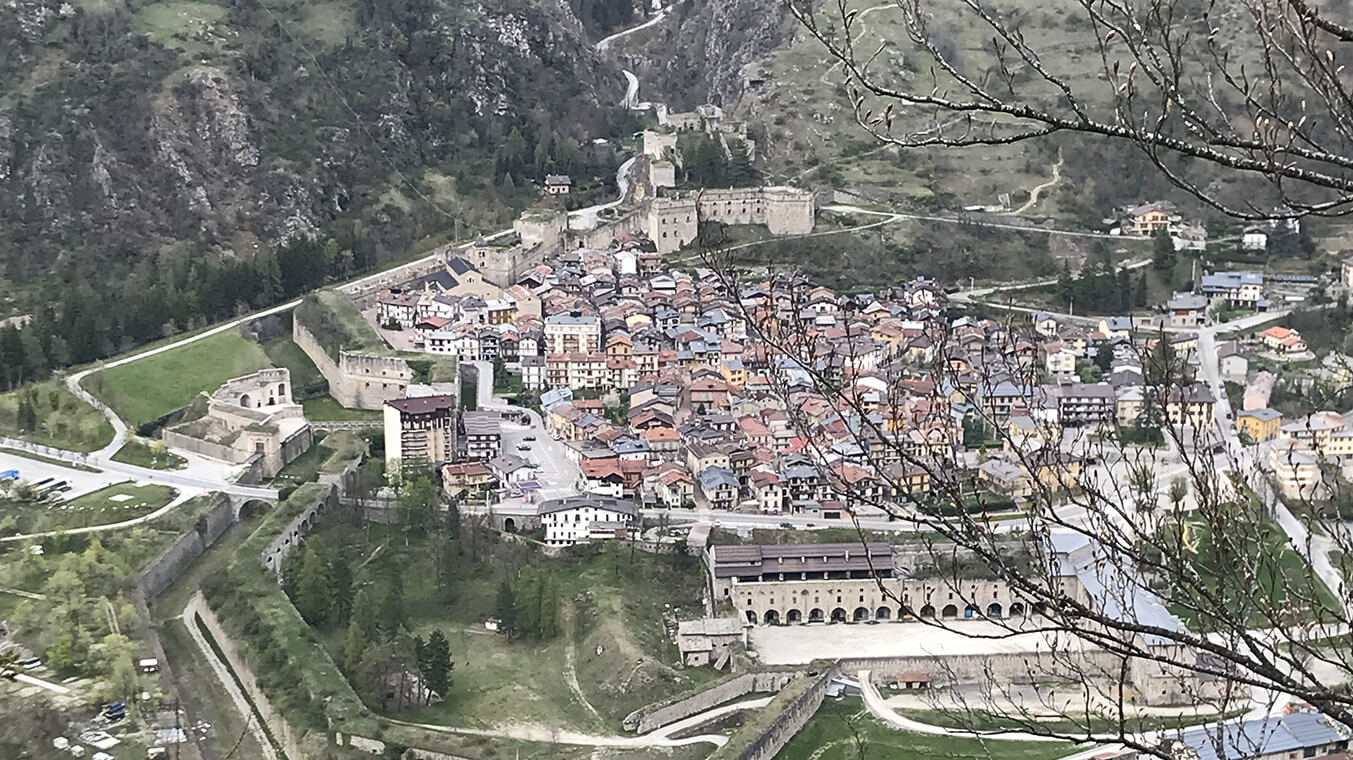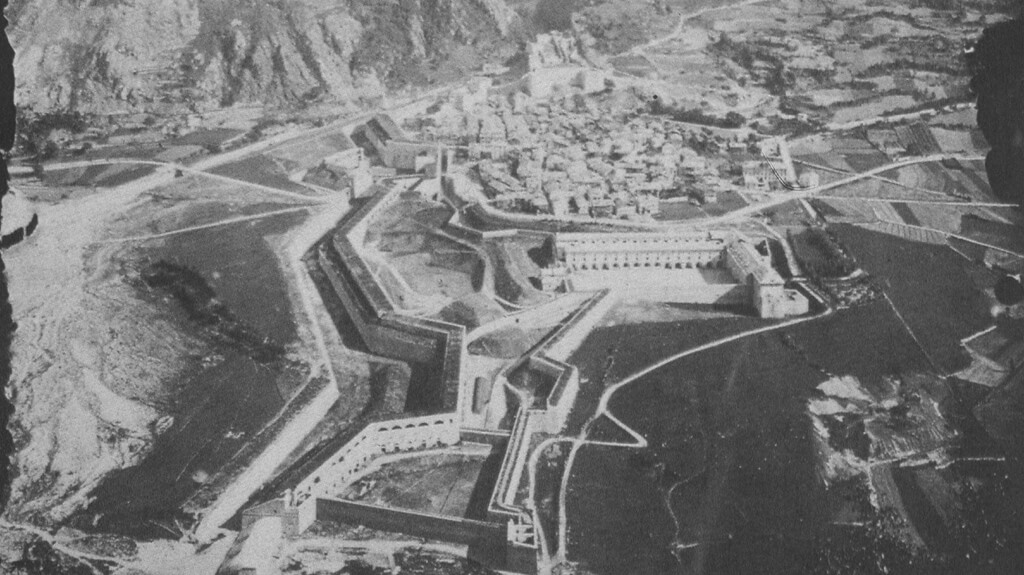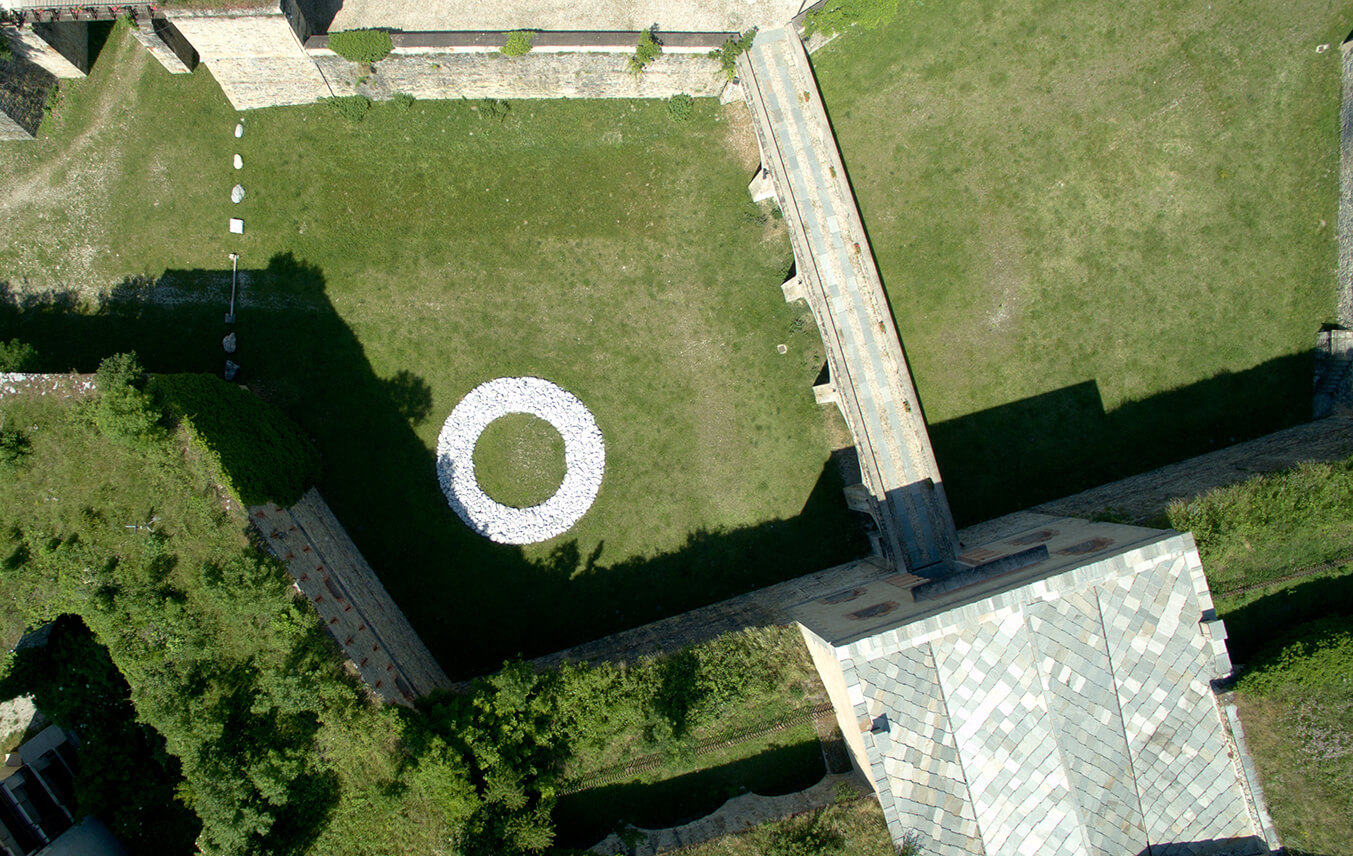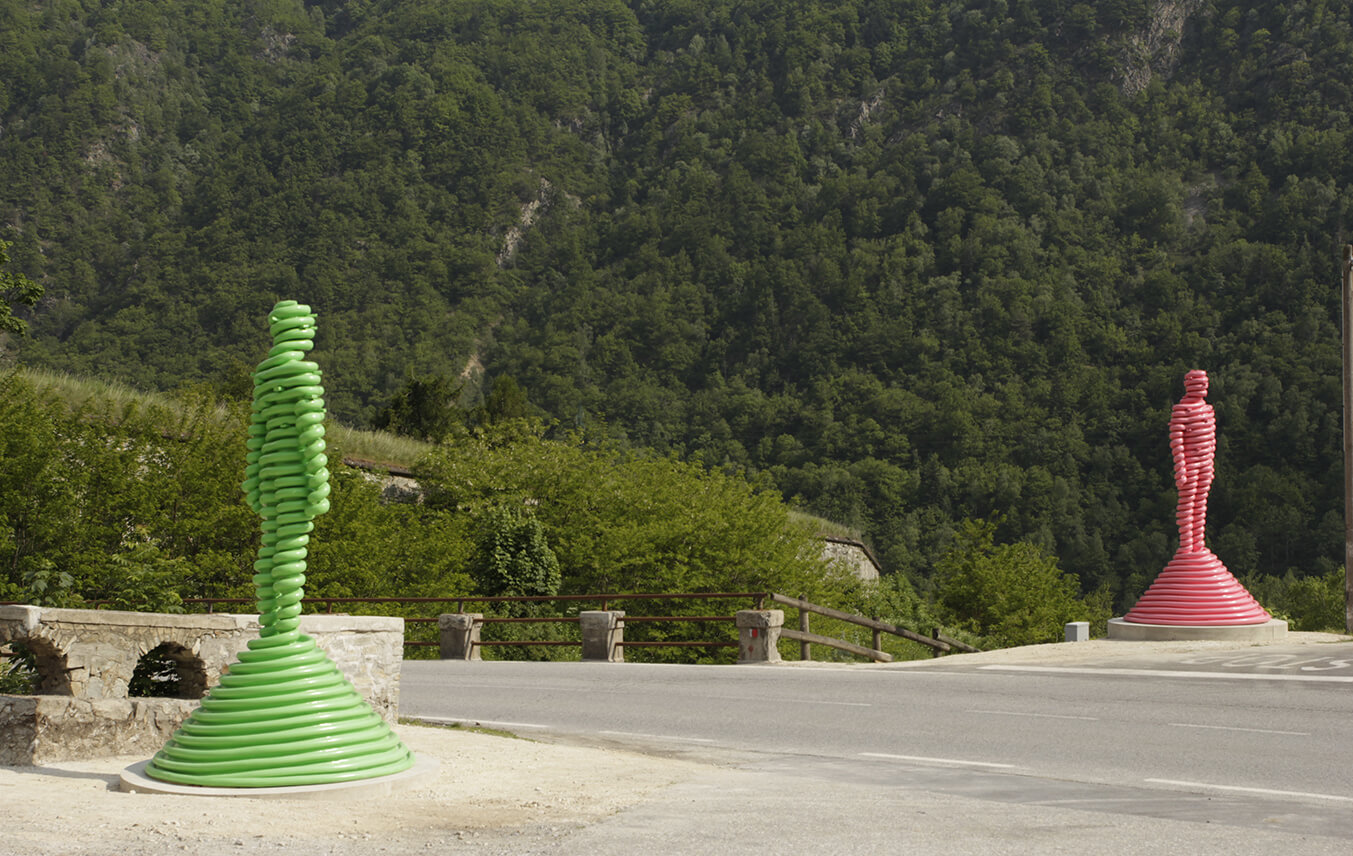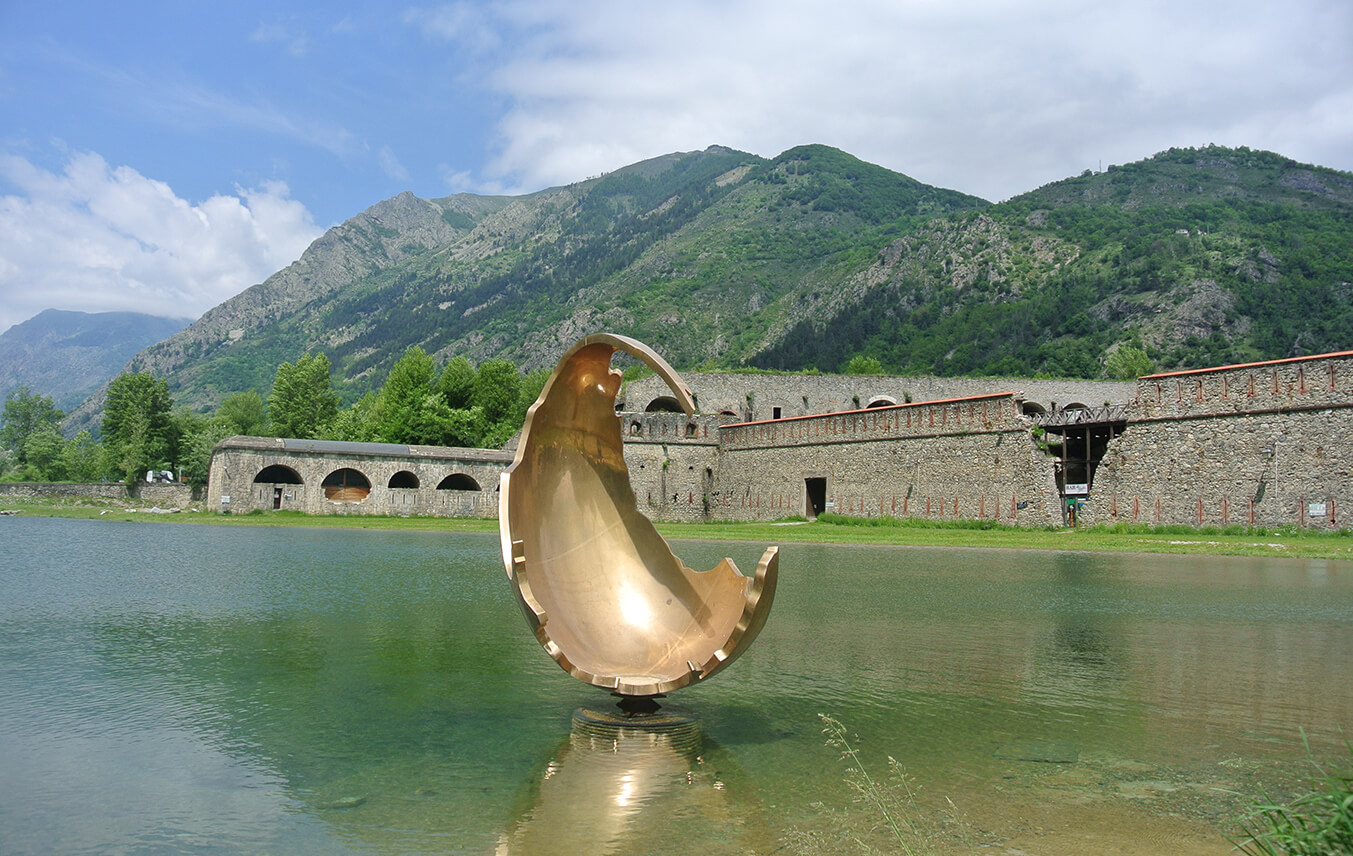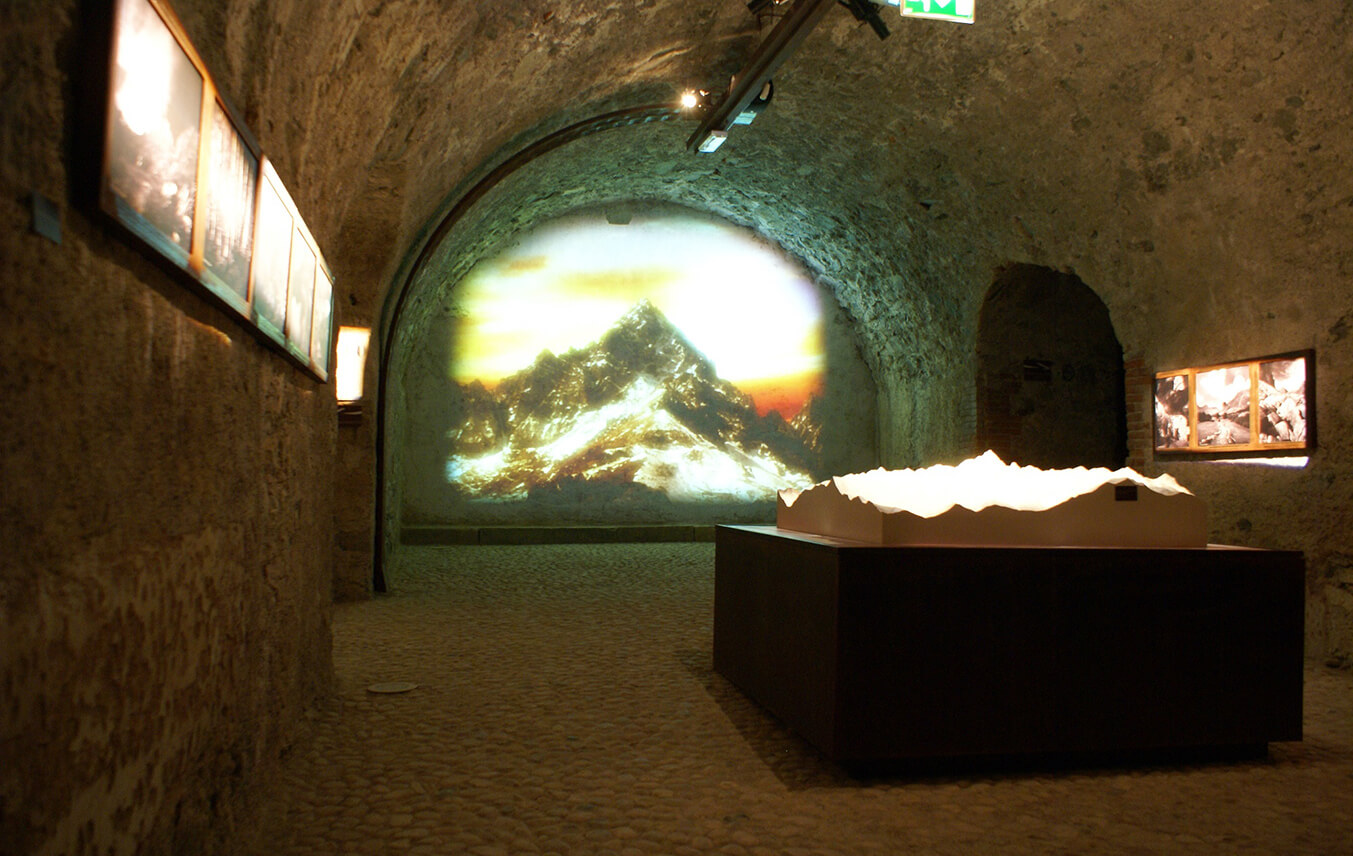The Albertinian Fortress
The history
The Fortress of Vinadio is to be considered among the most significant examples of military architecture in the entire Alpine arc. The construction works of the fortress were commissioned by King Charles Albert, began in 1834 and ended in 1847. Despite a brief interruption between 1837 and 1839, this very masterpiece of military engineering and technique was completed in just eleven years and up to 4,000 people were involved in its construction at some stages.
This fortification, which flanks the town to the west, has a straight line length of about 1,200 meters which extends from the rock of the fortress to the river Stura.
The fortification, which flanks the town to the west, has a straight line length of about 1,200 meters
The itinerary develops on three levels of walkway and is divided into three fronts: the Upper Front, the Front of Attack and the Lower Front, for a total of about 10 km.
Over the years, unstable political relations with neighbouring France suggested integrating new structures into the Fortress: Piroat, Sarziera, Sources and Neghino Fortresses.
The Fortress of Vinadio was never the scene of clashes and its importance declined slowly until the outbreak of the First World War when Italy definitively abandoned the Triple Alliance to take sides in favour of the Triple Agreement. The Fortress was then downgraded to a huge deposit. However, it still managed to play a crucial role in the history of the 20th century as it hosted an important military dovecote, it was incorporated into a backward line of the Alpine Wall and the "Command Cave" of the Border Guard was built inside this fortress. Its complete disposal took place only after the end of the Second World War.
The fortress today
The Fortress of Vinadio was neglected for many years, but today it has turned back to life thanks to the will and commitment of the Municipality of Vinadio and Marcovaldo Cultural Association until 2016, and then of the Artea Foundation, which took over in 2017 and since then have worked and is still working on the enhancement and promotion of one of the most important examples of military architecture in the Western Alps.
The primary objective is to improve and strengthen the knowledge and identity value of the Fortress of Vinadio for the local community, for future generations as well as for the general public.
The aim is to make its history and evolution known, so that the Fortress can be a place of cognitive experience, social aggregation, civil growth and identity redefinition for both individuals and groups.
The exhibition space develops in the area that goes from the front of attack to the rock of Fortino (little Fort) and it houses the permanent multimedia itinerary called Montagna in Moviento (Mountain in Motion), the exhibition Messageri alati (Winged Messengers), the virtual reality workstations- Vinadio Virtual Reality, and the Family & Kids Friendly itineraries Mammamia che Forte! (Mammamia what a Fortress!).
L’espace d’exposition, qui se développe dans l’aire qui du Front d’attaque arrive jusqu’à la roche du Fortin, abrite le parcours multimédia permanent, Montagna in movimento, l’exposition Messaggeri alati, les bornes de réalité virtuelle Vinadio Virtual Reality et les itinéraires Family&Kids Friendly Mammamia che Forte.
The Fortress is also home to important cultural, musical and sporting events and it is used for recreational purposes. It attracts a large number of tourists all year round: in summer thanks to its artificial lake and in winter with its skating rink, thus demonstrating its natural tourist vocation and attractiveness.
The Fortress of Vinadio is also a place where the history and architecture of the past coexist with present and contemporary art.
Two Giants, two imposing and scenographic figures created by the Scottish artist David Mach, guard and monitor the town of Vinadio. They are placed at the gates of the fortress, on the edge of the road that connects Italy to France, marking the first Italian stage of the VIAPAC. They allude to the historical figures of the giants Battista and Paolo Ugo of Vinadio.
* itinerary of contemporary art that develops for about 200 km between Digne - Les -Bains (France) and Caraglio (Italy).
Circle was created by Richard Long an historical exponent of the international movement "Land Art". It is a circle with a diameter of 11 meters, located in the moat of the France Gate (Porta Francia). It is made of white stones and rough boulders with coal. It seems to enclose the eternity of the place where it is located, exposed to the seasons of time but wrapped in a magic that removes it from the deterioration of the human world.
Near the lake in front of the Fortress there is Untitled - Renaissance, the work of Emmanuele De Ruvo, winner of the Eighth Umberto Mastroianni International Sculpture Award of the Piedmont Region. This is an imposing bronze sculpture in equilibrium that represents the portion of an eggshell symbol of a successful birth through rupture, condensing in that very moment the passage between act and experience.
The Fortress of Vinadio is also a place where the history and architecture of the past coexist with the present and contemporary art.
Tour itineraries
THE FORTRESS OF VINADIO
ITS OWN STORY
A journey to discover one of the most important defensive structures in Piedmont as well as in the entire Alpine Arch. Its construction started in 1834 by order of Charles Albert of Savoy.
An amazing itinerary in the heart of the imposing defensive line through bastions, underground and protected tunnels.
- Guided tours during ordinary opening hours
- Specific itineraries dedicated to schools
- Special openings are made for groups and schools
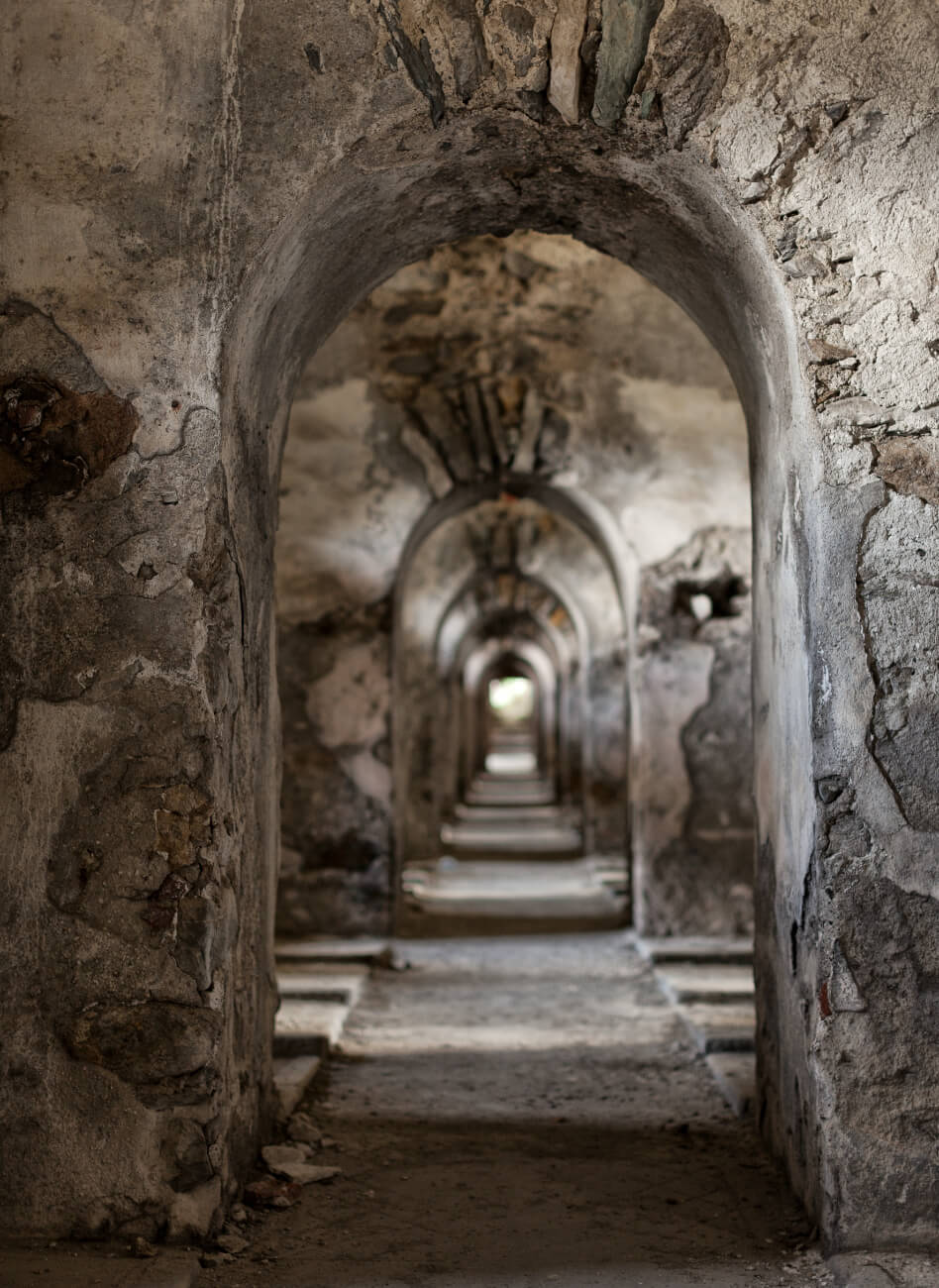
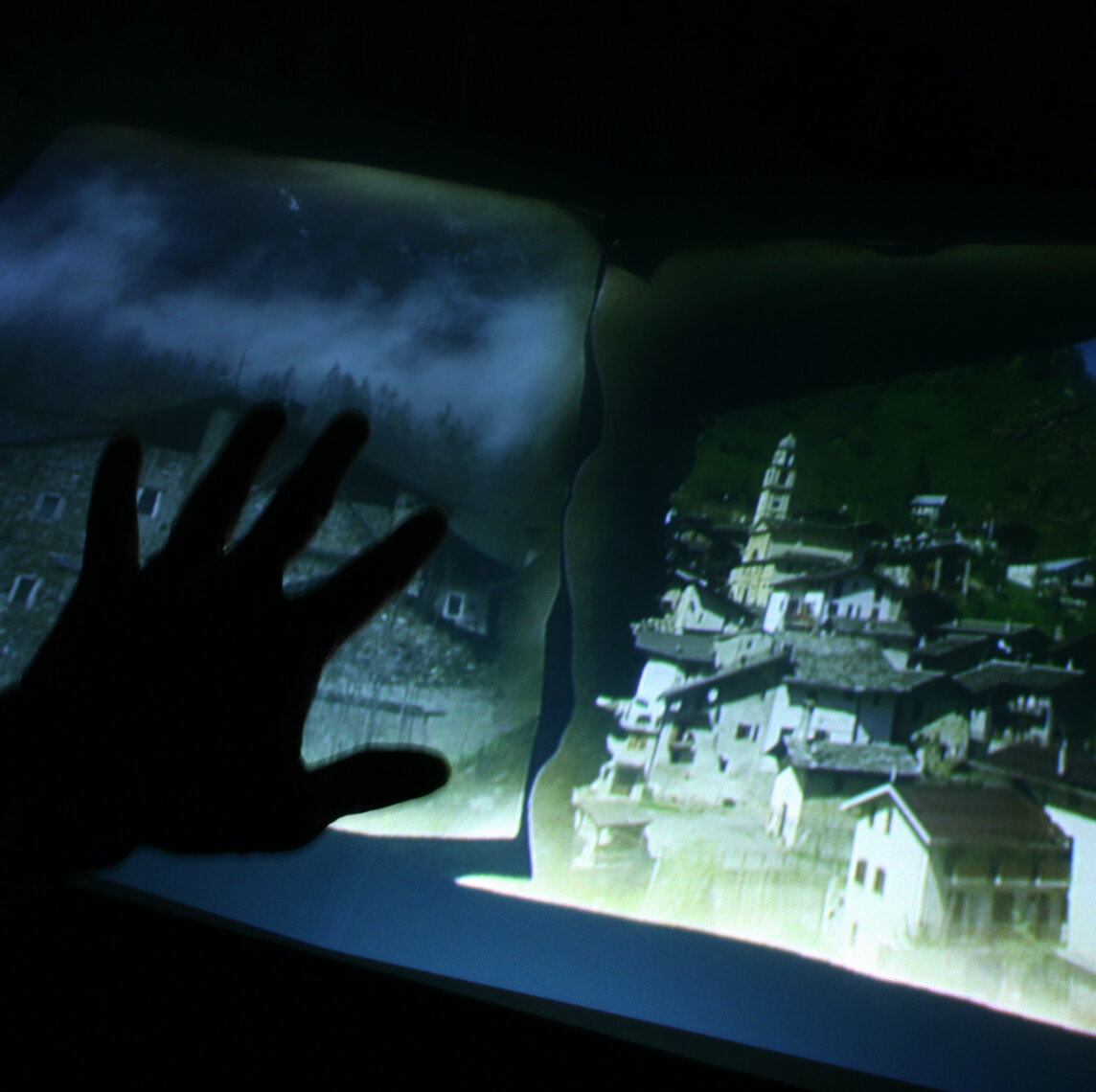
MOUNTAIN IN MOTION
MULTIMEDIA ITINERARY THROUGH THE SOUTHERN ALPS
The key word is "movement", an interpretation of the mountain as a dynamic and permeable environment, in contrast with the stereotype of a fixed, unchanging alpine world, condemned to extinction or to become an attachment of the urban sprawl. Motion means civilization; and the same multimedia installations, which constitute a choice of redeveloping the Fortress, invite you to journey through the past to reflect on the present, to move in space and time to feel that original interaction between places and men, between nature and history that has made the Alps a cradle of mountain civilization.
- Free visits during ordinary opening hours
- Guided visits for groups upon booking
- Specific itineraries dedicated to schools
- Special openings are made for groups and schools
VINADIO VIRTUAL REALITY
IMMERSIVE EXPERIENCES IN THE HEART OF THE FORTRESS
FREE FLIGHT ON THE FORTRESS
The idea of simulating a free flight around the Fortress with the possibility of seeing the entire building from a new point of view was developed through virtual reality: suspended in the air, in an immersive and engaging experience.
GIALLO FORTE. FORTRESS THRILLER
"Giallo Forte" virtual reality experience is based on a spy story, a real international intrigue in which the visitor, guided by the narrative voice of an "incriminated" officer, will discover the fortress through compelling paths.
- Guided tours during ordinary opening hours
- Special openings are made for groups and schools
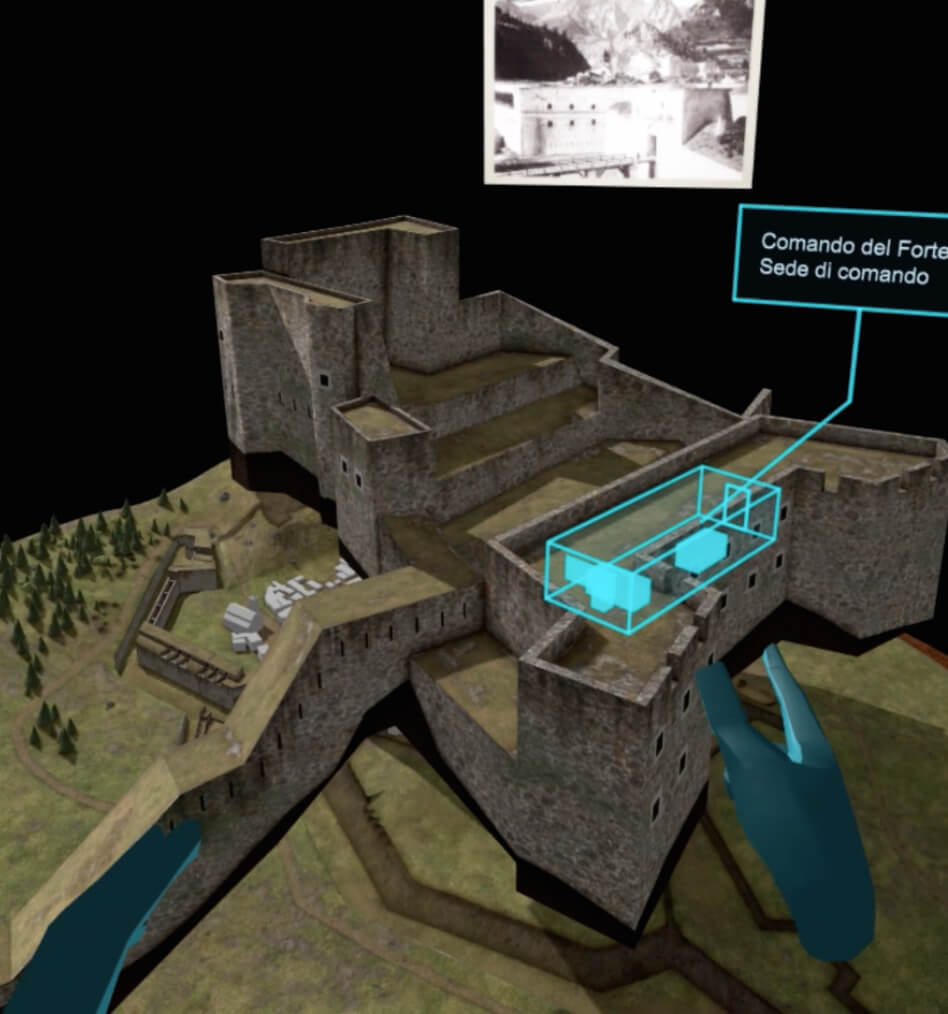
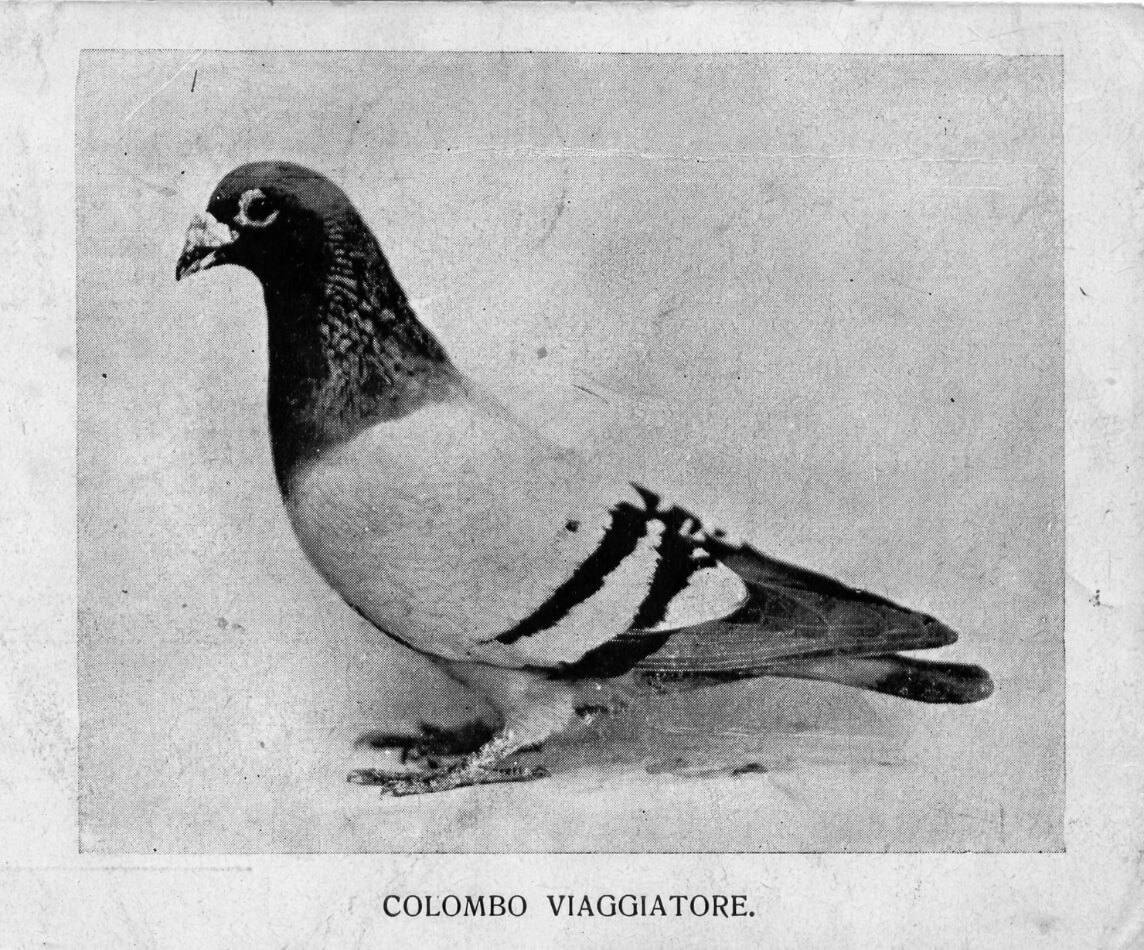
WINGED MESSENGERS
THE MILITARY DOVECOTE OF THE FORTRESS OF VINADIO
From the end of the nineteenth century up to 1943 the Fortress hosted a military dovecote, one of the many scattered throughout the national territory. Today the rooms that once hosted this structure are difficult to recognize as their end use has changed, but the memory of the dovecote relives in a permanent exhibition through the furnishings and documents collected by the last commander on duty there, Marshal Stefano Giavelli, and then kept for long years by his son Orazio.
- Free visits during ordinary opening hours
- Guided tours for groups upon booking
- Specific itineraries dedicated to schools
- Special openings are made for groups and schools
MAMMAMIA WHAT A FORTRESS!
TOUR ITINERARIES FOR FAMILIES WITH CHILDREN
Its Majesty the Fortress | Families with children aged 3 to 5
This tour will allow you to discover the history and curiosities of the place guided by the silhouettes of the mascot Tino, the Dove Sergeant of the Fortress, along an itinerary full of sensory interactions and with the help of a poster-book that must be made with the origami technique.
The soldier’s diary | Families with children aged 6 to 12
Tino, the dove, will accompany the visitors along the tour itinerary up to the room that houses the military dovecote. By the end of the visit, the children will have completed their educational booklet, a travel diary, full of ideas and fun games.
- Guided tours during ordinary opening hours
- Tour options available in Italian and French
- Specific itineraries dedicated to schools
- Special openings are made for groups and schools
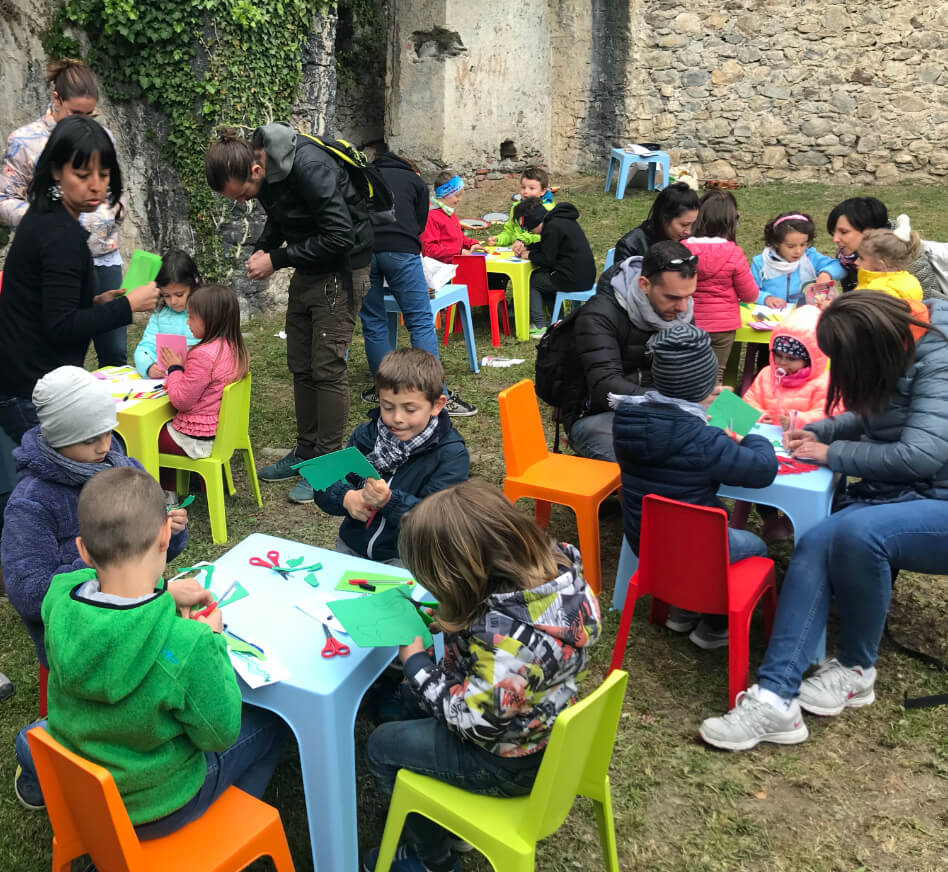
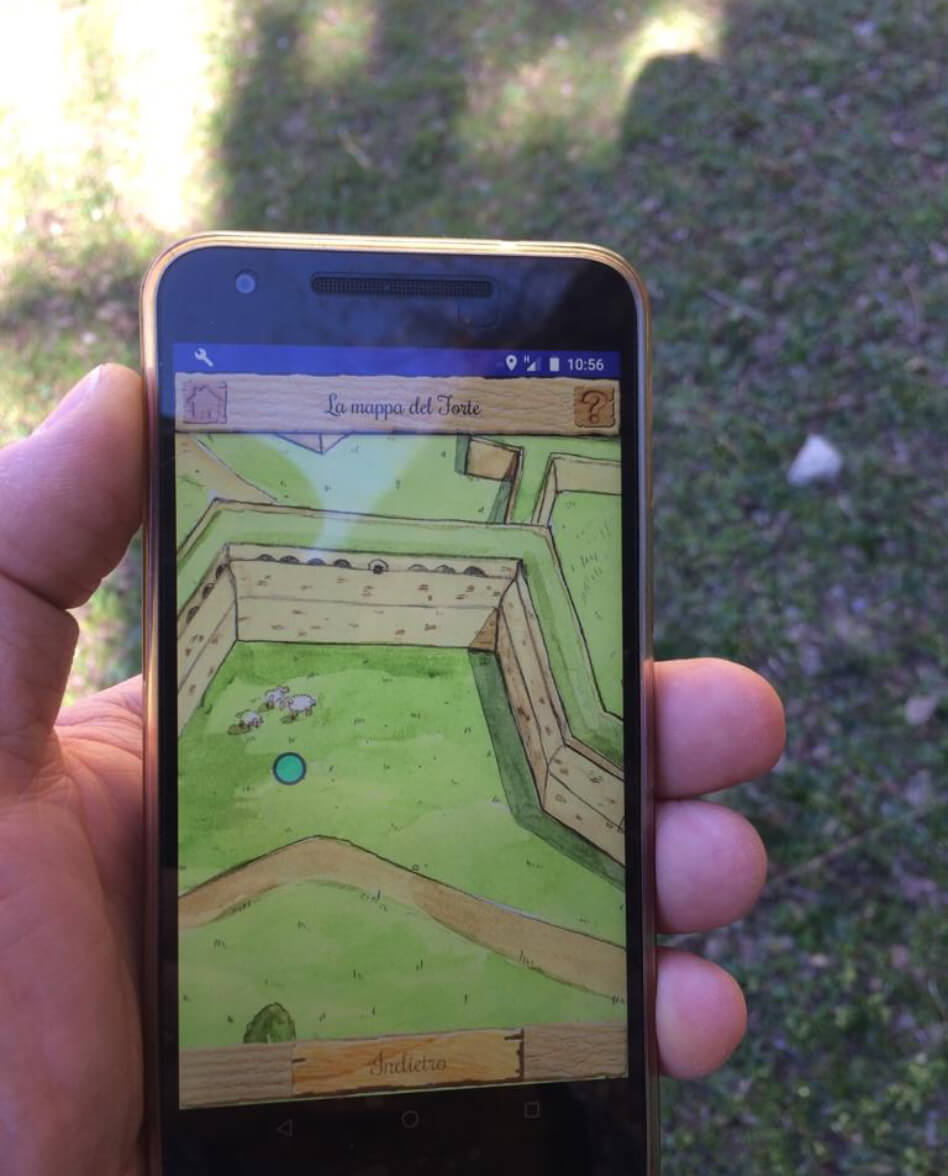
THE LOST LETTER
THE INTERACTIVE APP OF THE FORTRESS
Vinadio, 1833. The church of San Fiorenzo, a Romanesque-Gothic jewel, is about to be demolished during the construction of the Albertinian Fortress. An important letter, written by the parish priest of Vinadio, has disappeared within the walls of the fortress. Only this letter could save this church, but it will have to be delivered to King Charles Albert in person.
Thanks to the free Kurubik app (available for iOS and Android) you can perform a fun and exciting rescue mission, based on real events. Smartphones turn into precious tools to explore the surrounding reality in search of hidden clues that will lead to the final solution!
The game starts in the Fort lake area.
- Free game that develops throughout the moat and the external areas of the Fortress.
- Specific options are made for groups and schools.
CURIOSITIES
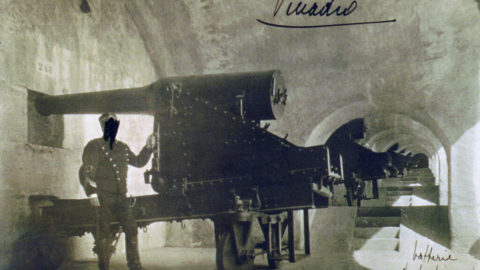
In the 90s of the twentieth century a parcel containing thirty photographs of the Fortress of Vinadio was found in the military archives of Chateau de Vincennes, showing their archiving date: June 3rd, 1914. If initially these images might seem like a simple photographic collection made by the French espionage, the careful observation of the uniform of an officer of the Royal Army that appears in some shots traces them back to the end of the 19th century. They are certainly photographs of Italian origin, with non-random subjects, but selected for the specific purpose of carrying out a survey of the fortification in its whole.
But there is more to know. In some photos you can see the erasures made with china ink to mask the abbreviations as well as the officer’s face who was photographed several times.
This intervention was probably not carried out by the French as they had no interest in masking this material which was already secret. The only person who could worry to be recognized was the one who had sent the material to the French: the photographer himself? Anyone related to him?
A real mystery. The discovery of these photographs has in any case allowed to us to find out that the Fortress of Vinadio, despite its inactivity in wartime, was however armed with pieces of artillery of various caliber, contrary to what was previously thought as war relicts have never been found inside.
This fortress was surely used as a prison for several hundred Garibaldinians (Garibaldi’s voluntary soldiers) taken prisoner in the so-called Battle of Aspromonte.
In this regard, Cuneo’s historian Maurizio Ristorto writes: “In 1862 the Garibaldians of Aspromonte passed through the town under military escort. On 2nd August the march on Rome started by Garibaldi and a few thousand of his followers was cut short; for the moment the Royal Government considers it inappropriate and provocative of serious complications.
The Garibaldinians are arrested and for a thousand of them the Fortress of Vinadio is set as a place of imprisonment. Coming from Genoa with the escort of a battalion of the 67th Infantry under the orders of Captain Giuria, they arrived in Cuneo on the morning of September 18th; although the minister has ordered that everything necessary for the trip must be provided, the vast majority of prisoners are in poor condition; their clothes are almost tattered and their shoes are broken, many with bare heads or covered in a wretched rag; it rains heavily and they have to walk from Cuneo to Vinadio.
Local people don’t miss the opportunity to show their sympathy: in Borgo San Dalmazzo there is a whip-round to purchase cigars that are gladly accepted and carriages are rented to transport at least to Demonte those who can’t continue on foot, but Captain Giuria, interpreting with extreme rigor the order of equal treatment for everyone, rejects the offer ".
The Garibaldinians remained in the prisons of the Fortress of Vinadio for 24 days. They were probably kept in the lower part of the fortress, close to the course of the river Stura. They were, together with and Garibaldi himself, amnestied at the first possible opportunity: the marriage of Maria Pia of Savoy, daughter of Victor Emmanuel II with the king of Portugal on October 5th, 1862. They were then released in dribs and drabs until November 7th, except for the most "Dangerous ones" who were escorted to their homes.
During the First World War, the Fortress of Vinadio, like all the other constructions of the western Alps, was disarmed and the artillery sent to replenish the scarce armament stock on the Austrian front. During the conflict, the Fortress was used as a prison camp for Austrian prisoners and then after the war it was used as barracks and an artillery depot.
The history of the Fortress of Vinadio ended on April 25th, 1945 when the retreating German troops undermined the Fortress in various points. The commitment of the local population and fortuitous causes managed to prevent their devastation except for the central armoury which was reduced to a pile of rubble.
In the following years, the rubble was used to stem the river Stura in various points, an operation made possible thanks to the intervention of the inhabitants of Vinadio. Some photographs show this immense work, depicting the people of Vinadio dragging the boulders from the Fortress down to the river using strong ropes.

